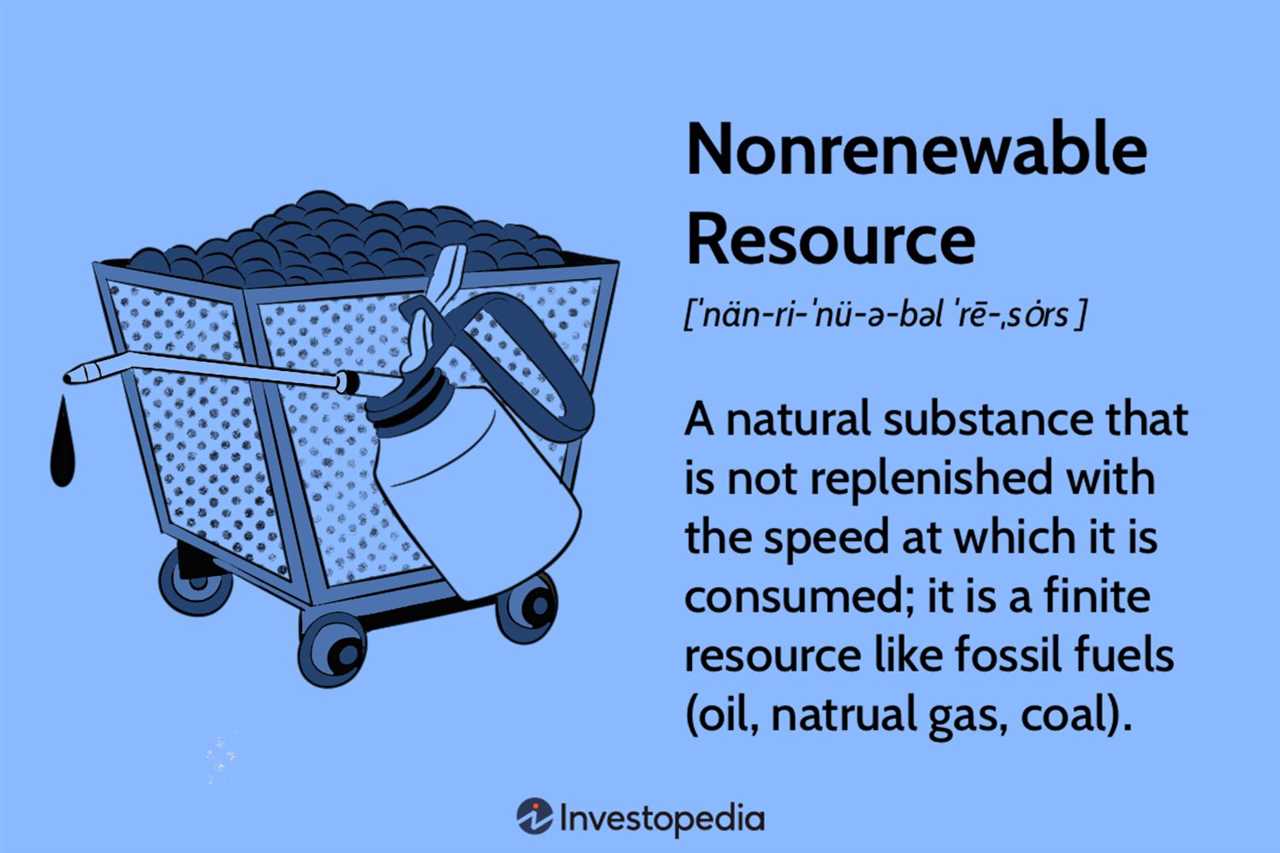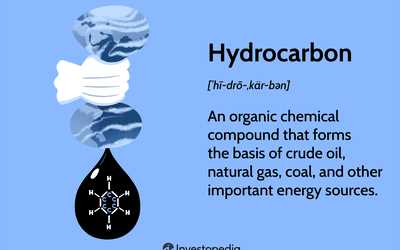Nonrenewable Resource Definition
A nonrenewable resource is a natural resource that cannot be replenished or replaced within a human lifetime. These resources are formed over millions of years through geological processes and are finite in nature. Once they are depleted, they cannot be regenerated or restored.
Nonrenewable resources include fossil fuels such as coal, oil, and natural gas, as well as minerals like copper, gold, and uranium. These resources are essential for various industries and are used for energy production, manufacturing, and construction.
Unlike renewable resources, which can be replenished naturally within a short period of time, nonrenewable resources are limited in quantity. Their extraction and consumption have significant environmental impacts, including air and water pollution, habitat destruction, and greenhouse gas emissions.
Due to their finite nature and environmental concerns, there is a growing need to shift towards sustainable alternatives and reduce reliance on nonrenewable resources. This includes investing in renewable energy sources, promoting energy efficiency, and implementing recycling and conservation measures.
What are Nonrenewable Resources?
Nonrenewable resources are natural resources that cannot be replenished or replaced within a short period of time. These resources are formed over millions of years and their formation process is extremely slow. Once they are depleted, they cannot be regenerated in our lifetime or even in several lifetimes.
Nonrenewable resources include fossil fuels such as coal, oil, and natural gas, as well as minerals like gold, silver, and copper. These resources are finite in nature and their extraction and use have significant environmental impacts.
Unlike renewable resources, which can be naturally replenished, nonrenewable resources are limited in quantity. As a result, their extraction and consumption can lead to resource depletion and environmental degradation.
Nonrenewable resources are often used for energy production, transportation, and manufacturing. They play a crucial role in the global economy, but their finite nature raises concerns about their long-term sustainability.
Efforts are being made to reduce dependence on nonrenewable resources and promote the use of renewable alternatives. This includes investing in renewable energy sources such as solar, wind, and hydropower, as well as implementing energy efficiency measures.
Overall, nonrenewable resources are valuable but limited natural resources that require careful management and conservation to ensure their sustainable use for future generations.
Features of Nonrenewable Resources
Nonrenewable resources are characterized by several key features:
- Limited supply: Nonrenewable resources exist in finite quantities and cannot be replenished within a human lifetime or even over geological timescales. Once these resources are depleted, they are gone forever.
- Slow formation: Nonrenewable resources, such as fossil fuels and minerals, take millions of years to form through natural processes. This slow formation rate means that these resources cannot be replaced at the same rate at which they are being consumed.
- High energy density: Many nonrenewable resources, particularly fossil fuels like coal, oil, and natural gas, have a high energy density. This means that they contain a large amount of energy per unit of weight or volume, making them efficient sources of energy.
- Environmental impact: The extraction, processing, and use of nonrenewable resources often have significant environmental impacts. For example, mining for minerals can lead to habitat destruction and water pollution, while burning fossil fuels releases greenhouse gases and contributes to climate change.
- Economic importance: Nonrenewable resources play a crucial role in the global economy. They are used in various industries, including energy production, manufacturing, and transportation. The availability and access to nonrenewable resources can have significant economic implications for countries and regions.
Examples of Nonrenewable Resources

Nonrenewable resources are natural resources that cannot be replenished or replaced within a human lifespan or at a rate that is sustainable for future generations. These resources are finite and will eventually be depleted. Here are some examples of nonrenewable resources:
1. Fossil Fuels
Fossil fuels, such as coal, oil, and natural gas, are formed from the remains of ancient plants and animals that lived millions of years ago. These fuels are used to generate electricity, power vehicles, and heat homes. However, the extraction and burning of fossil fuels contribute to air pollution and climate change.
2. Nuclear Energy

Nuclear energy is generated through the process of nuclear fission, where the nucleus of an atom is split to release a large amount of energy. Uranium and plutonium are the most commonly used fuels in nuclear power plants. While nuclear energy is a relatively clean source of electricity, the disposal of radioactive waste poses significant environmental and safety concerns.
3. Minerals and Metals
Nonrenewable resources also include minerals and metals, such as gold, silver, copper, iron, and aluminum. These resources are used in various industries, including construction, manufacturing, and technology. However, the extraction and processing of minerals and metals can have detrimental effects on the environment, including habitat destruction and water pollution.
4. Natural Stone
Natural stone, such as granite, marble, and limestone, is another example of a nonrenewable resource. These stones are used for building materials, countertops, and decorative purposes. However, the extraction of natural stone can result in deforestation, soil erosion, and habitat loss.
5. Fertile Soil
Fertile soil is essential for agriculture and food production. However, soil erosion, depletion of nutrients, and contamination can make soil nonrenewable. Unsustainable farming practices, deforestation, and pollution contribute to the degradation of fertile soil.
It is important to recognize the finite nature of nonrenewable resources and promote sustainable alternatives to ensure the well-being of future generations and the health of our planet.

Emily Bibb simplifies finance through bestselling books and articles, bridging complex concepts for everyday understanding. Engaging audiences via social media, she shares insights for financial success. Active in seminars and philanthropy, Bibb aims to create a more financially informed society, driven by her passion for empowering others.
